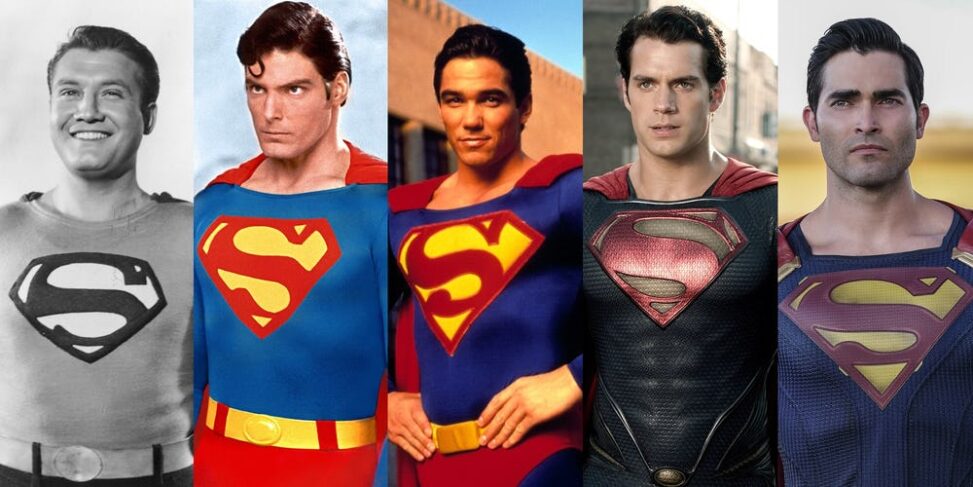Superman, the iconic superhero created by Jerry Siegel and Joe Shuster, has been around since the 1900s. I will explore the evolution of Superman by comparing two different versions from the 90s era with the modern portrayal. Through an examination of character traits, thematic elements, and societal contexts, we uncover the nuanced differences that define each iteration. In the 1990s, Superman underwent significant changes across a variety of media. The storyline “The Death and Return of Superman” reflected a shift towards more complex storytelling and character development, addressing darker themes and existential challenges. It challenged traditional notions of invincibility, revealing Superman’s humanity amidst superhuman abilities. This portrayal aligned with the socio-cultural landscape of the time. Meanwhile, “The Man of Steel” reimagined Superman’s origin story, emphasizing his struggle to balance his dual identity, portraying a more humanized persona grappling with moral dilemmas and inner conflicts. The 1990s saw a multifaceted exploration of Superman, capturing both the character’s timeless idealism and a more nuanced, introspective portrayal. In the 21st century, Superman’s portrayal has evolved to reflect contemporary concerns and cultural shifts. DC Comics aimed to modernize classic characters, introducing a younger, socially conscious Superman who grapples with issues such as political corruption and social inequality. This modern-day Superman struggles with existential questions of identity and purpose, torn between his Kryptonian heritage and his adopted home on Earth. This film dives into Superman’s struggle to find his place in a world that questions his role as a saviour. Additionally, modern Superman embodies philosophical questions of morality, power, and identity, enriching his character with complexity and depth. This modern portrayal reflects a more multidimensional and introspective Superman, differing significantly from earlier iterations and aligning with contemporary sensibilities. The difference between Superman in the 1990s and the modern era lies in their thematic focus, character development, and portrayal of societal issues. While in the 1990s Superman grappled with existential threats and traditional superhero narratives, the modern interpretation delves deeper into moral ambiguity, social commentary, and psychological introspection. In the 1990s, Superman addressed societal concerns through traditional storytelling styles, while the modern iteration confronts contemporary issues from a nuanced and often darker perspective. Superman’s character continues to evolve, embodying societal aspirations and anxieties across different cultural landscapes. Superman’s enduring legacy lies in his ability to inspire and challenge audiences, transcending generational boundaries and cultural divides. Superman will remain an icon of hope, symbolizing the eternal struggle for justice and righteousness in an ever-changing world.
References:
“Superman Homepage.” 2009. Superman Homepage. 2009. https://www.supermanhomepage.com/.
Wikipedia Contributors. 2019. “Superman.” Wikipedia. Wikimedia Foundation. April 15, 2019. https://en.wikipedia.org/wiki/Superman.
“Superman.” 2015. DC Extended Universe Wiki. 2015. https://dcextendeduniverse.fandom.com/wiki/Superman.
White, Mark D. 2013. “Moral Judgment,” March. https://doi.org/10.1002/9781118541821.ch1.
“The BEST Superman Origin Story! Superman: Secret Origin—Comic Book Review.” n.d. Www.youtube.com. https://www.youtube.com/watch?v=gXoTIkd8RQ0.
“Death and Return of Superman.” n.d. DC Database. https://dc.fandom.com/wiki/Death_and_Return_of_Superman.


Jaylie
Collin’s essay discusses Superman and the parallels and contrasts between the ninety’s version and the modern adaptation. The nineties Superman is a static character who is averse to social issues and combats these problems using his superpowers. Whereas modern day Superman is a much more dynamic character who struggles with identity issues while still using powers to combat crime. Summarized by Collin’s stating that “The difference between Superman in the 1990s and the modern era lies in their thematic focus, character development, and portrayal of societal issues” They do a great job using academic language to discuss who Superman is and what he signifies. While I enjoyed the content and it’s a great set up for the introduction of an essay, it unfortunately missed a couple marks. While the picture used does highlight the differences between the ninety’s superman and the modern one, It’s not two separate pictures. There is no use of scholarly sources, the ones provided are unacademic and therefore not qualifiable for university level assignments. I feel the title and overall structure of the essay could be stronger as there are no discernible paragraphs or cohesion, as well as being below the word count. Most importantly, the essay does not make any references to the constructed gender ideologies. Superman falls into the category of the constructed masculine, he is the “ideal” man, which is strong, powerful and dominant. Overall. I feel with some adjustments and more time invested into assignment; it could be quite successful.